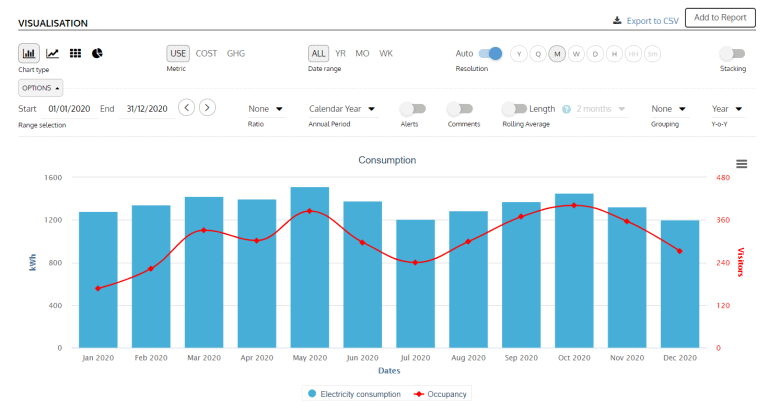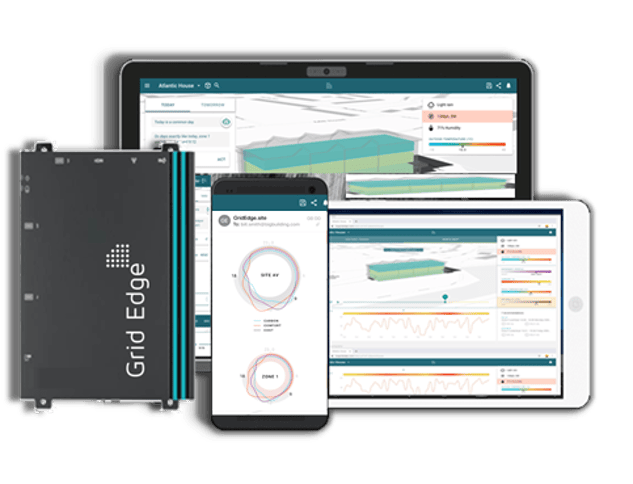The arbnco building performance platform helps businesses to measure, analyse and improve energy efficiency and indoor environmental quality, which makes for healthier buildings and occupants, now more important than ever to businesses worldwide. Through a combination of the two key areas of the software – energy optimisation and health and wellbeing – it allows building owners and occupiers to integrate data sets to obtain a holistic understanding of building performance and maximise opportunities to reduce energy and carbon.
The energy platform provides a single source for managing energy performance and compliance across large and diverse property portfolios. It centralises large data sets for continuous monitoring and delivers bespoke retrofit strategies to reduce building energy and lead buildings to a net zero carbon pathway.
The health and wellbeing platform seeks to resolve the dilemma that many engineers and architects face – ensuring effective building performance when aiming to create well-ventilated, comfortable, energy-efficient, and well-maintained buildings. arbnco’s platform brings clarity to the conditions and experience of inhabiting the built environment, and high-resolution IoT sensing to HVAC controls.
arbnco provides the platform and tools for commercial organisations to collect, verify and bring real insight to their building energy and workplace wellness data. The energy optimisation platform provides:
- ‘No-touch’ energy performance analytics for a single building or a 100,000+ building commercial portfolio
- Proprietary smart-meter interval data-driven machine learning algorithms performing end-use disaggregation to accurately identify specific opportunities for improvement
- Daily load-profiles and occupancy patterns providing insight into the difference between base load energy usage and ‘wastage’ – excess energy consumption during off hours
- Targeted energy conservation measures providing both savings potential and region-specific cost estimates
- Portfolio-wide screening, targeting and reporting providing aggregate visibility of performance improvement opportunities
- Site-specific renewables potential and storage recommendations based on detailed load profiling and demand reduction opportunities
The health and wellbeing platform provides real-time monitoring of the effects of the indoor environment on health and wellbeing, and enables organisations to understand how the quality of their real estate affects occupant satisfaction and productivity.
The platform gathers both qualitative and quantitative data, allowing for a full assessment of human experience. High quality indoor sensors provide ubiquitous monitoring of indoor environmental conditions, such as carbon dioxide, volatile organic compounds, particulate matter, temperature and humidity. This is combined with occupant engagement to gather feedback on how they feel the building is performing in human terms.
Through data collection and occupant feedback, the platform supports other green building certification and reporting standards including: LEED, BREEAM, WELL, Fitwel, and RESET.
Overall, the combination of the energy optimisation and health and wellbeing platforms allows businesses to optimise their property portfolios to operate as cost effective, intelligent green buildings.
arbnco’s building performance software platform is based on a Software as a Service model with annual subscription fees.
On the energy side, the solution cost per building is from 10’s to small hundreds of pounds, but that typically would identify energy saving opportunities for the building. These vary from zero cost behavioural measures to larger capex initiatives with a quantified return on investment. Typically for UK properties we see energy and carbon reduction scope of between 10 and 40% of current performance.
For the health and wellbeing platform, small gains in productivity and satisfaction for staff will outweigh the cost of the system. Investment is both a small upfront payment for sensors and an annual license for the software and reporting. The benefits of staff safety, reassurance, and comfortable working conditions are difficult to quantify but demonstrably real.





